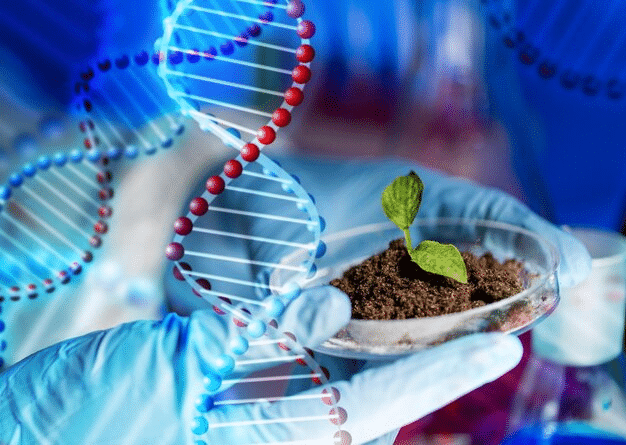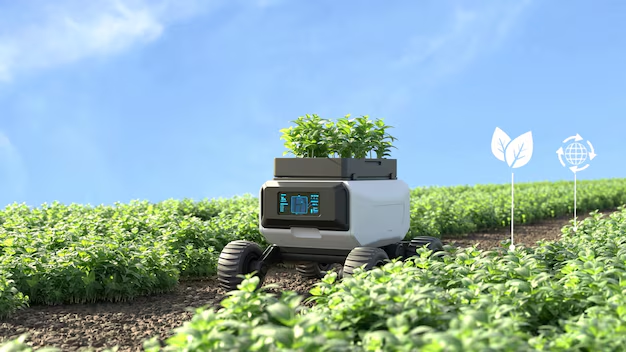Technology is revolutionizing traditional agriculture, addressing challenges like food security, resource management, and sustainability. From precision farming to AI-driven analytics, innovations are making agriculture more efficient, sustainable, and resilient in the face of growing global demands.
Here’s how technology is reshaping the agricultural landscape:
1. Precision Agriculture
Precision agriculture uses technology to optimize farming practices, increasing yield while reducing resource waste.
- GPS and GIS Technologies: Farmers use GPS-enabled equipment for precise planting, fertilization, and irrigation. Geographic Information Systems (GIS) provide data on soil conditions and weather patterns.
- Drones: Drones equipped with sensors and cameras monitor crop health, identify pest infestations, and map farmland efficiently.
- Variable Rate Technology (VRT): This allows farmers to apply fertilizers and pesticides in varying amounts based on specific field conditions, minimizing waste and environmental impact.
2. Smart Irrigation Systems
Water conservation is a critical issue in agriculture, and smart irrigation technologies are addressing this challenge effectively.
- IoT Sensors: These monitor soil moisture levels in real-time and trigger irrigation systems only when needed.
- Drip Irrigation: Advanced drip systems use sensors to deliver water directly to plant roots, reducing evaporation and water waste.
- Weather Integration: Smart irrigation systems integrate weather forecasts to adjust watering schedules automatically.
3. Use of Artificial Intelligence (AI) and Machine Learning
AI and machine learning technologies are transforming decision-making in agriculture.
- Crop Monitoring: AI analyzes images from drones and satellites to assess crop health and detect diseases early.
- Yield Prediction: Machine learning algorithms predict yields based on historical data, weather trends, and current conditions.
- Autonomous Farming Equipment: AI-driven tractors and harvesters operate with minimal human intervention, increasing efficiency.
4. Robotics and Automation
Automation is reducing labor dependency and improving productivity in agriculture.
- Harvesting Robots: Robots can pick fruits and vegetables with speed and precision, reducing waste and labor costs.
- Weed Control Robots: Autonomous machines identify and remove weeds, reducing the need for chemical herbicides.
- Planting and Seeding: Robotic systems automate planting processes, ensuring consistent and accurate placement.
5. Blockchain in Agriculture
Blockchain technology is enhancing transparency and traceability in the agricultural supply chain.
- Food Safety: Blockchain records every stage of the food production process, from farm to table, ensuring safety and quality.
- Fair Trade Practices: Farmers can document their practices and certifications, securing fair prices for their products.
- Supply Chain Optimization: Blockchain streamlines logistics, reducing delays and losses during transport.
6. Genetically Modified Organisms (GMOs) and Biotechnology

Biotechnology is playing a significant role in developing crops that are more resilient and nutritious.
- Drought-Resistant Crops: Genetically modified crops can withstand harsh conditions, ensuring yields in areas affected by climate change.
- Pest-Resistant Crops: GMOs reduce reliance on pesticides by making plants naturally resistant to pests.
- Biofortified Crops: Biotechnology enhances the nutritional content of crops, addressing malnutrition in developing regions.
7. Internet of Things (IoT) in Farming
IoT connects devices and sensors to streamline agricultural operations.
- Smart Greenhouses: IoT systems control temperature, humidity, and lighting, optimizing conditions for plant growth.
- Livestock Monitoring: Wearable sensors track the health and activity of livestock, enabling early disease detection.
- Predictive Maintenance: IoT devices monitor machinery, predicting maintenance needs to prevent breakdowns.
8. Data Analytics and Big Data
Data-driven insights are helping farmers make better decisions and improve efficiency.
- Field Analysis: Big data combines soil, weather, and crop data to recommend optimal planting schedules and practices.
- Market Trends: Analytics predict market demand, enabling farmers to adjust production accordingly.
- Risk Management: Data models assess risks like pests or adverse weather, helping farmers prepare proactively.
9. Vertical Farming and Hydroponics
Innovative farming methods are transforming how and where crops are grown.
- Vertical Farming: Growing crops in vertically stacked layers saves space and allows year-round production in urban areas.
- Hydroponics: This soil-free farming method uses nutrient-rich water, requiring less land and water compared to traditional farming.
- Aquaponics: Combining fish farming with hydroponics creates a closed-loop system that recycles nutrients and water.
10. Sustainable Practices and Renewable Energy
Technology is fostering sustainable farming methods to minimize environmental impact.
- Solar-Powered Farms: Solar panels provide renewable energy to power irrigation systems and equipment.
- Carbon Sequestration: Technologies monitor and enhance carbon capture in soil, contributing to climate change mitigation.
- Biodegradable Materials: Innovations in packaging and crop protection are reducing plastic use in agriculture.
Challenges and Considerations
While technology is transforming agriculture, challenges remain.
- High Costs: Advanced technologies can be expensive, limiting adoption among small-scale farmers.
- Digital Divide: Rural areas often lack the infrastructure needed for modern agricultural technologies.
- Skill Gaps: Farmers need training to effectively use new tools and systems.
- Data Security: As agriculture becomes data-driven, protecting sensitive information is a growing concern.
Conclusion
Technology is driving a revolution in agriculture, addressing age-old challenges and enabling sustainable growth. From precision farming and IoT solutions to robotics and AI, these innovations are not only improving efficiency but also contributing to environmental conservation. As these technologies become more accessible, they promise a future of resilient and productive agriculture capable of feeding the world’s growing population.
FAQs
1. What is precision agriculture?
Precision agriculture uses technology like GPS and IoT sensors to optimize farming practices, improving yield and reducing resource use.
2. How do drones benefit agriculture?
Drones monitor crop health, survey fields, and apply fertilizers or pesticides with precision, saving time and resources.
3. What is vertical farming?
Vertical farming grows crops in stacked layers, often indoors, using less space and water while enabling year-round production.
4. How does blockchain improve agriculture?
Blockchain enhances transparency and traceability in the supply chain, ensuring food safety and fair trade practices.
5. What challenges exist in adopting agricultural technology?
High costs, lack of infrastructure, skill gaps, and data security concerns are key barriers to widespread adoption.


